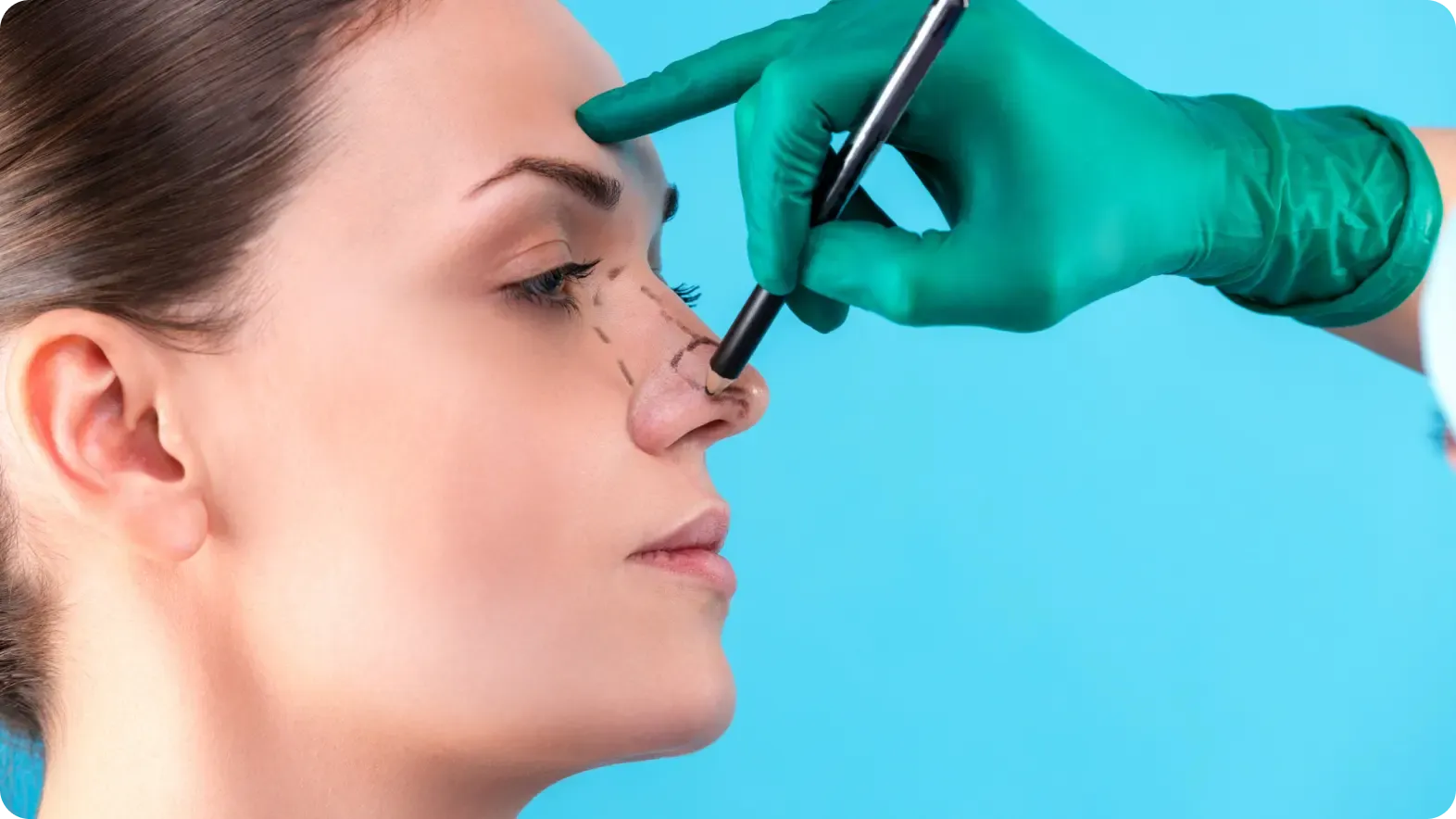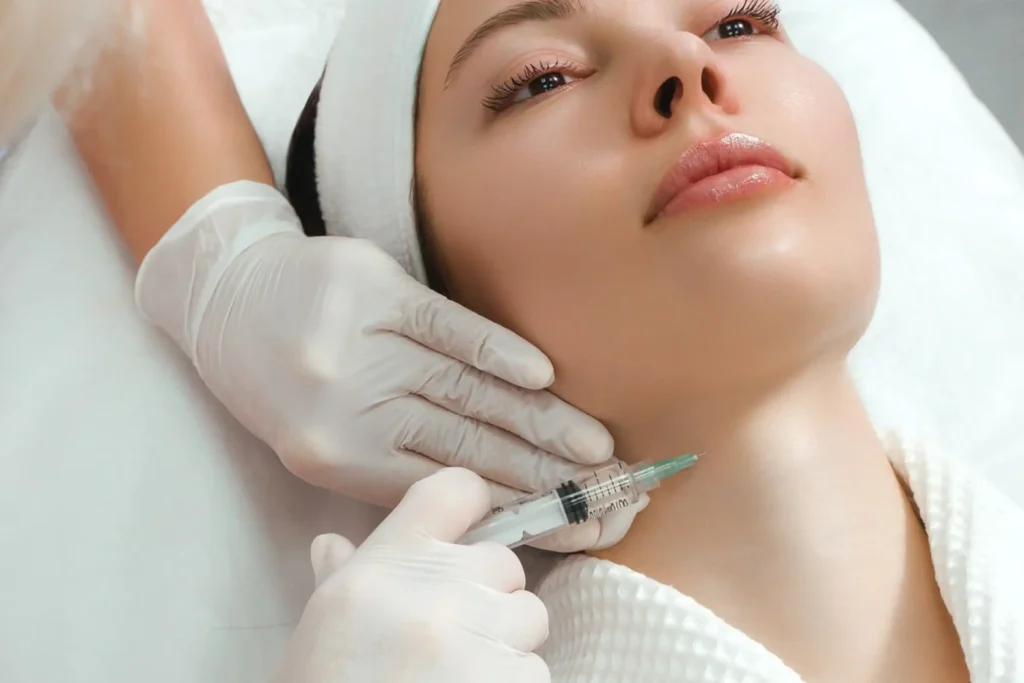What Age Is Appropriate for Rhinoplasty? Teen Patients and Adults — Evidence-Based, Age-Related Considerations
November 7, 2025
Rhinoplasty is one of the most personalized procedures in facial plastic surgery. Age matters—a lot. Not just the number on a birth certificate, but where someone is in facial growth, psychological readiness, and overall health. This guide pulls together the current thinking on how age affects candidacy and planning, comparing teen and adult patients and laying out practical safeguards that keep results safe, predictable, and natural.
Defining Appropriate Age: Skeletal Maturity, Nasal Growth, and Sex-Specific Milestones
Great rhinoplasty rests on a stable foundation. Operating before the nose has finished growing can derail facial development and affect both looks and breathing.
Craniofacial growth curves and nasal maturation
Craniofacial growth curves and nasal maturation
- Most females reach nasal and midfacial skeletal maturity around 15–16; most males around 16–17+. There’s individual variation—some finish a little earlier or later—and subtle nasal changes can continue into the early 20s.
- The nasal septum is the keystone of midface growth. Its cartilage—especially at the septovomerine junction—contributes to dorsal and caudal projection. Intervening too soon can alter the growth trajectory.
- Clinically, look for stable height for at least 12 months, a clear slowdown in growth velocity, and completion of secondary sexual characteristics.
- A careful growth history helps (shoe/clothing size changes, recent growth spurts, etc.).
- Still on the fence—especially with younger adolescents? A hand–wrist radiograph can corroborate skeletal maturity. Many surgeons reserve this for borderline cases to avoid unnecessary radiation.
- Aggressive septal resection during active growth can disturb the septovomerine growth center, risking saddle-nose deformity, columellar retraction, or midfacial hypoplasia. Airway problems can surface years later as the face matures.
- Form follows function: lose septal support and long-term aesthetics can suffer.
- Cosmetic rhinoplasty is generally deferred until growth has stabilized.
- Functional septorhinoplasty may be reasonable earlier for compelling reasons—severe obstruction from septal deviation, post-traumatic deformity, congenital issues (e.g., cleft nasal deformity), or sleep-disordered breathing. In these cases, surgeons favor growth-preserving, conservative techniques, balancing early relief with protection of future development.

Candidacy in Adolescents: Medical, Psychological, and Legal Criteria
Well-chosen teen patients can do extremely well. That said, the bar is higher than in adults—because the developmental and psychosocial stakes are higher.
Medical prerequisites
Medical prerequisites
- Documented growth stability for at least 12 months and an exam consistent with skeletal maturity.
- Control inflammatory conditions that can skew healing or outcomes (allergic rhinitis, chronic sinusitis). Treat medically first—think allergy testing, topical steroids, or immunotherapy as appropriate.
- Clear indications—functional, aesthetic, or both—articulated by the patient (not just family members).
- Coordinate with orthodontic or orthognathic plans, since maxillary advancement/expansion can change nasal base width and the nasolabial angle.
- Teens should have a stable body image and be able to express specific, realistic goals.
- Screen for body dysmorphic disorder (BDD) and mood disorders using validated tools like the BDDQ-DV or the COPS questionnaire; refer to mental health professionals when needed.
- Use pre-op counseling and visual aids to align expectations—be cautious with computer morphing so it doesn’t imply a guarantee.
- Obtain guardian consent and adolescent assent. Document that the teen understands benefits, risks, limitations, and the possibility of revision.
- Respect local laws on medical consent and “mature minor” provisions.
- Clear documentation—standardized photography, functional assessments, counseling notes—protects both patient and provider.
- If orthognathic surgery is planned, rhinoplasty usually follows skeletal corrections, as midface changes can materially affect nasal aesthetics.
- Example: A teen with a retrusive maxilla scheduled for Le Fort I advancement should typically wait on rhinoplasty, since maxillary movement can rotate the nasal tip and widen the alar base.
Adult Considerations: Indications, Risks, and Predictors of Outcomes Across the Lifespan
Adults come with a wide range of anatomy, health profiles, and priorities. Age shapes tissue quality, healing, and goals—but rarely rules someone out.
Young adults (18–25)
Young adults (18–25)
- Subtle nasal changes can still occur, but the risk of disturbing growth plates is largely behind us.
- Lifestyle counts: contact sports increase risk of post-op trauma; timing and protection matter.
- Skin is often thicker and more sebaceous—especially over the tip—which can blunt definition. Structure-first, conservative refinements tend to age better.
- Cartilaginous support softens with age; ligaments relax. Tip ptosis and a lengthened upper lip may appear, sometimes with dynamic nasal valve collapse.
- Plans often emphasize support—septal extension grafts, lateral crural strut grafts, spreader grafts—to avoid late droop and preserve function.
- Healing remains strong, but revision risk climbs in smokers, thin-skinned patients (irregularities show), and those with prior surgeries.
- Vascularity and collagen remodeling slow down. Expect longer-lasting edema and prioritize gentle tissue handling.
- Medication management is key: anticoagulants and antiplatelet agents may require a coordinated perioperative plan with cardiology or primary care. Assess ASA class and anesthesia risk thoroughly.
- Goals often tilt toward function—better airflow, support for nasal valves, relief of chronic obstruction—paired with tasteful, age-appropriate refinement.
- Optimize the airway at the same time: correct septal deviation, support the internal nasal valve (e.g., spreader grafts), treat turbinate hypertrophy, and address external valve collapse.
- Use validated tools like NOSE or SCHNOS to quantify baseline obstruction and track improvement.

Procedure Planning by Age: Techniques, Materials, and Safeguards
Technical planning shifts with growth status, skin thickness, comorbidities, and surgical history—because one-size-fits-all simply doesn’t fit.
Growth-preserving maneuvers in teens
- Conservative septal resections that respect the dorsal and caudal L-strut—especially near the septovomerine junction.
- Preservation rhinoplasty concepts (dorsal preservation via push-down/let-down) minimize disruption of the keystone area and reduce long-term deformity risk.
- Suture-based tip refinements (transdomal, interdomal, lateral crural spanning) instead of aggressive cartilage excision.
- Limited osteotomies and gentle handling of alar cartilages to preserve support and growth potential.
Graft selection across ages
- Septal cartilage is the first choice when available—straight, reliable, and low morbidity.
- In revisions or when septal supply is limited (common in older adults):
- Auricular (ear) cartilage works well for alar rim or valve support—its natural curve helps.
- Costal (rib) cartilage provides ample volume for major reconstructions; mitigate warping with balanced carving, diced techniques, or DCF (diced cartilage wrapped in fascia). Consider calcification in older patients.
- Donor-site morbidity is usually low but should be discussed—especially for rib harvests.
Managing thick versus thin skin envelopes
- Thick skin: build stronger underlying structure, use precise tip sutures, and be patient with edema. Judicious triamcinolone microinjections can help with persistent supratip fullness.
- Thin skin: aim for an ultrasmooth framework; add soft-tissue camouflage (fascia, dermal grafts) to mask micro-irregularities. Avoid overresection that telegraphs imperfections.
- Adjuncts: edema control with taping, surgeon-directed lymphatic massage protocols, and strict sun protection to minimize dyschromia.
Perioperative protocols by age cohort
- Activity timelines:
- Adolescents and young adults: light activities at 1–2 weeks, non-contact exercise around 3–4 weeks, and contact sports after 8–12 weeks with protection. Confirm bone healing (typically complete by 6 weeks).
- Older adults: return to activity more conservatively; mind blood pressure control and fall risk.
- Scar care: most incisions are internal or at the columella, but silicone therapy and photoprotection for 6–12 months help scars mature.
- Structured follow-up: plan visits through the first year (and longer for adolescents) to catch valve issues, asymmetries, or chronic edema early.
Evidence, Outcomes, and Counseling: Setting Expectations and Mitigating Risk
Surgical skill matters—but selection and counseling often decide the outcome.
Literature overview
When performed after skeletal maturity with growth-preserving techniques, adolescents see complication and revision rates comparable to adults.
Across large series, revision rates generally land in the single digits to low teens; complexity (trauma, revision, cleft) and skin characteristics can push rates higher.
Long-term stability is strongest when the L-strut is preserved, valve function is supported, and dorsal/caudal support remains intact.
Across large series, revision rates generally land in the single digits to low teens; complexity (trauma, revision, cleft) and skin characteristics can push rates higher.
Long-term stability is strongest when the L-strut is preserved, valve function is supported, and dorsal/caudal support remains intact.
Counseling frameworks
- Risk–benefit clarity: modest, natural refinement tends to age better than dramatic change. Airway optimization is part of aesthetic success—not an afterthought.
- Cultural and family dynamics: are the teen’s goals truly their own? If pressure feels high, a cooling-off period helps.
- Social media’s influence: discuss filters, influencer results, and the trap of “idealized” noses that ignore individual anatomy. Use realistic, anatomy-informed simulations.
Outcome measurement and documentation
- Standardized photography (frontal, lateral, three-quarter, base) with consistent lighting and head position.
- Objective airflow assessments when relevant: Cottle maneuver, peak nasal inspiratory flow, rhinomanometry, or acoustic rhinometry.
- Patient-reported outcome measures (PROMs): NOSE or SCHNOS for function; ROE for satisfaction and appearance.
Red flags and deferral criteria
- Active growth spurt or unclear skeletal maturity.
- Unstable mental health, BDD, or expectations that stay unrealistic despite counseling.
- External pressure (family, peers, social media) rather than patient-driven goals.
- Nonadherence risks: inconsistent follow-up, nicotine or vaping in the perioperative window, unmanaged comorbidities.
- Planned orthognathic surgery likely to change nasal relationships—rhinoplasty typically follows skeletal work.

Practical Scenarios
- A 15-year-old female with two years of height stability and persistent right-sided obstruction from severe septal deviation: Functional septorhinoplasty may be appropriate using conservative septal correction, spreader grafts for valve collapse, and minimal dorsal work; keep monitoring growth over the next year.
- A 17-year-old male football player seeking dorsal refinement: If skeletal maturity is confirmed, proceed—ideally in the off-season. Hold off on contact sports for at least 8–12 weeks and discuss protective face guards after clearance.
- A 42-year-old woman with tip ptosis and dynamic internal valve collapse: Structural rhinoplasty with septal extension and spreader grafts can improve tip support and airflow; counsel about potentially prolonged edema and taping protocols.
- A 66-year-old man on a direct oral anticoagulant with long-standing obstruction and external valve collapse: Coordinate medication management with his cardiologist, prioritize functional gains with lateral crural strut grafts and turbinate reduction, and tailor anesthesia planning to ASA status.
Conclusion
The “right age” for rhinoplasty isn’t just a date on the calendar—it’s about biological maturity, psychological readiness, and the specific anatomy at hand. For most teens, waiting until the nose and midface finish growing—typically around 15–16 for females and 16–17+ for males—protects long-term appearance and function. Select functional cases in younger adolescents can be addressed earlier with growth-preserving techniques when symptoms are significant.
In adults, age guides the plan rather than setting a hard limit. Younger adults benefit from careful structural refinement and sport-smart timelines; midlife patients often need robust support to prevent late tip droop and valve collapse; older adults require meticulous perioperative management and frequently prioritize breathing alongside aesthetics.
Across every age group, the fundamentals don’t change: patient-driven goals, rigorous assessment, conservative and structurally sound techniques, and transparent counseling backed by objective measures. With those pillars in place, rhinoplasty can deliver durable, natural-looking results that respect both the form and the function of the nose.
In adults, age guides the plan rather than setting a hard limit. Younger adults benefit from careful structural refinement and sport-smart timelines; midlife patients often need robust support to prevent late tip droop and valve collapse; older adults require meticulous perioperative management and frequently prioritize breathing alongside aesthetics.
Across every age group, the fundamentals don’t change: patient-driven goals, rigorous assessment, conservative and structurally sound techniques, and transparent counseling backed by objective measures. With those pillars in place, rhinoplasty can deliver durable, natural-looking results that respect both the form and the function of the nose.

Schedule Your Appointment with Dr. Mourad
If you are considering facial plastic surgery and want results that enhance your natural beauty without looking overdone, schedule a consultation with Dr. Moustafa Mourad today. You will receive personal, expert guidance at every step—from your first visit to your final result.
From Our Blog

November 7, 2025 | Dr. Moustafa Mourad | Uncategorized
How Long Until the Final Result? The Truth About Swelling, Shape Changes, and Patience After Rhinoplasty — Managing Expectations
Rhinoplasty is both a structural procedure and a healing journey. Everyone wants to know: when will I see “the final nose”? Fair question—just not a simple one. Bones, cartilage, skin, and mucosa recover on different timelines; swelling fades in waves; and the tip keeps evolving long after the splint comes off. The good news? When expectations match biology and timing, uncertainty turns into confidence. Here’s what happens, why it happens, and how to navigate the process with realistic checkpoints and smart strategies.
READ THE ARTICLE
November 7, 2025 | Dr. Moustafa Mourad | Uncategorized
Revision Rhinoplasty: Why Some Patients Need a Second Nose Job and What to Ask — Less Common but High Value
Elective rhinoplasty is one of the most technically demanding operations in facial plastic surgery. Even when everything goes “right,” tiny asymmetries, how scars mature, or lingering breathing issues can blunt an otherwise good first result. Most people are happy after their primary surgery. But a meaningful minority—often quoted in the literature as about 5–15%—consider a revision.
READ THE ARTICLE
November 6, 2025 | Dr. Moustafa Mourad | Uncategorized
The Role of Skin Thickness, Nasal Cartilage, and Bone Structure in Your Rhinoplasty Outcome — An Anatomical Deep‑Dive
Every patient wants to know how long recovery will take after their facial plastic surgery procedure. The answer is that recovery isn’t the same for everyone. The timeline depends on the type of facial plastic surgery you choose, your individual healing response, and how closely you follow aftercare instructions. While some procedures allow you to return to regular activities within a week, others require several weeks before you feel fully comfortable in public. The key is understanding that recovery is a process, and each stage brings you closer to the final results you’re excited to see.
READ THE ARTICLE
November 5, 2025 | Dr. Moustafa Mourad | Uncategorized
What to Expect on the Day of Surgery: From Anesthesia to Packing to Going Home — The Day-Of Process
Surgery—big or small—follows a carefully choreographed plan built around safety, comfort, and clear communication. Knowing what happens from check-in to going home can ease nerves and help you prepare in a way that really matters. Below is a practical, step-by-step look at the day itself. Policies vary by hospital and procedure, but this framework reflects widely used standards and best practices.
READ THE ARTICLE